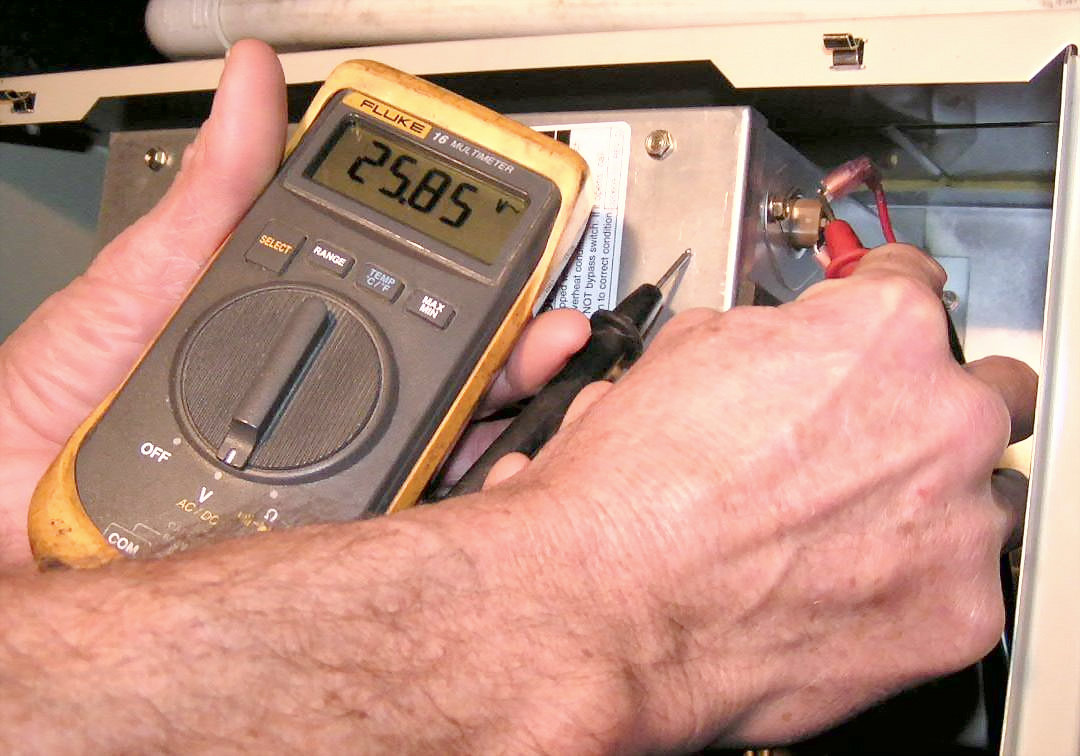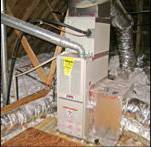 |
 |
 |
||
How the system works There are four main components in a refrigeration system: •The Compressor
•The Condensing Coil
•The Metering Device
•The Evaporator
Heat transfer can occur, when there is a temperature difference between two or more objects. Heat will only flow from a warm object to a colder object.
Latent Heat”- The heat required to change a liquid to a gas (or the heat that must be removed from a gas to condense it to a liquid), without any change in temperature. The compressor does just what it’s name is. It compresses the low pressure refrigerant vapor from the evaporator and compresses it into a high pressure vapor. •The inlet to the compressor is called the “Suction Line”. It brings the low pressure vapor into the compressor.
•After the compressor compresses the refrigerant into a high pressure Vapor, it removes it to the outlet called the “Discharge Line”. The “Discharge Line” leaves the compressor and runs to the inlet of the condenser.
Because therefrigerant was compressed, it is a hot high pressure vapor (as pressure goes up – temperature goes up). •Common used metering devices are, small thin copper tubes referred to as “cap tubes”, thermally controller diaphragm valves called “TXV’s” (thermal expansion valves) and single opening “orifices”.
•The metering device tries to maintain a preset temperature difference or “super heat”, between the inlet and outlet openings of the evaporator.
A very common type of metering device is called a TX Valve (Thermostatic Expansion Valve). This valve has the capability of controlling the refrigerant flow. If the load on the evaporator changes, the valve can respond to the change and increase or decrease the flow accordingly. The TXV has a sensing bulb attached to the outlet of the evaporator. This bulb senses the suction line temperature and sends a signal to the TXV allowing it to adjust the flow rate. This is important because, if not all, the refrigerant in the evaporator changes state into a gas, there could be liquid refrigerant content returning to the compressor. This can be fatal to the compressor. Liquid can not be compressed and when a compressor tries to compress a liquid, mechanical failing can happen. The compressor can suffer mechanical damage in the valves and bearings. This is called” liquid slugging”. Normally TXV's are set to maintain 10 degrees of superheat. That means that the gas returning to the compressor is at least 10 degrees away from the risk of having any liquid. The evaporator is where the heat is removed from your house , business or refrigeration box. ?Low pressure liquid leaves the metering device and enters the evaporator. Usually, a fan will move warm air from the conditioned space across the evaporator finned coils. The cooler refrigerant in the evaporator tubes, absorb the warm room air. The change of temperature causes the refrigerant to flash or boil, and changes from a low pressure liquid to a low pressure cold vapor. The low pressure vapor is pulled into the compressor and the cycle starts over. The amount of heat added to the liquid to make it saturated and change states is called Super Heat .One way to charge a system with refrigerant is by super heat. Starting at the compressor; Low pressure vapor refrigerant is compressed and discharged out of the compressor. The refrigerant at this point is a high temperature, high pressure, superheated vapor.The high pressure refrigerant flows to the condenser by way of the "Discharge Line". The condenser changes the high pressure refrigerant from a high temperature vapor to a low temperature, high pressure liquid and leaves through the "Liquid Line". The high pressure refrigerant then flows through a filter dryer to the Thermal Expansion valve or TXV. The TXV meters the correct amount of liquid refrigerant into the evaporator. As the TXV meters the refrigerant, the high pressure liquid changes to a low pressure, low temperature, saturated liquid/vapor.This saturated? liquid/vapor enters the evaporator and is changed to a low pressure, dry vapor.The low pressure, dry vapor is then returned to the compressor in the "Suction line".The cycle repeats itself. • •
Cooling Air conditioners use REFRIGERANTS that convert from a gas to a liquid and back again. Refrigerants are used to transfer heat from the air inside of a home to the outside air. The system has four main components. They are a compressor, a condenser and an evaporator. The compressor and condenser are usually located on the outside air portion of the air conditioner. The evaporator is located on the inside the house, sometimes as part of a furnace. That's the part that heats your house. The REFRIGERANT arrives at the compressor as a cool, low-pressure gas. The compressor compresses the REFRIGERANT. This packs the molecule of the REFRIGERANT closer together. The closer the molecules are together, the higher its energy and its temperature. The REFRIGERANT leaves the compressor as a hot, high pressure gas and flows into the condenser. If you looked at the air conditioner part outside a house, look for the part that has metal fins all around. The fins act just like a radiator in a car and helps the heat go away, or dissipate, quicker. When the REFRIGERANT leaves the condenser, its temperature is much cooler and it has changed from a gas to a liquid under high pressure. The liquid travels through A metering device. This device causes a restriction in the flow of refrigerant (causing a drop in pressure) and allows a reduced amount of REFRIGERANT MIX part gas and part liquid to flow into the evaporator. The refridgerent inside the evaporator picks up heat from inside air, causing the refrigerant to boil and change state from liquid to gas.The evaporator also has metal fins to help in exchange the thermal energy with the surrounding air.By the time the REFRIGERANT leaves the evaporator low pressure gas. It then returns to the compressor to begin its trip all over again.Connected to the evaporator is a fan that circulates the air inside the house to blow across the evaporator fins. Hot air is lighter than cold air, so the hot air in the room rises to the top of a room. There is a vent there where air is sucked into the air conditioner and goes down ducts. The hot air is used to cool the gas in the evaporator. As the heat is removed from the air, the air is cooled. It is then blown into the house through other ducts usually at the floor level. This continues over and over and over until the room reaches the temperature you want the room cooled to. The thermostat senses that the temperature has reached the right setting and turns off the air conditioner. As the room warms up, the thermostat turns the air conditioner back on until the room reaches the temperature. Heating In a straight cool unit heat is provided by electrical resistance (heating element) inside the air hander. The element heats up and the room air pulled in over the heating element , then to be distributed by blower thru vents to rooms.
Heat Pump A heat pump is an air conditioner that contains a valve that lets it switch between "air conditioner" and "heater." When the valve is switched one way, the heat pump acts like an air conditioner, and when it is switched the other way it reverses the flow of the REFRIGERANT the heat pump and acts like a heater. Heat pumps also have an additional auxilary heating element in the air handler to add heat under certain conditions , when heat coming from unit is insuficent. |
||||